 |
|
Chopsticks
|
March 2011
On Titles and Cover Art
I can't tell you how many times I've been asked if I illustrated my own covers, or
if I got to choose my covers. The answer for almost all authors, even big names, is
no. We do not control cover art. And mostly, we do not want to control cover art.
What you should understand about the publishing industry before you go into it is
that the cover art and even the title of your novel are largely going to be controlled
by the marketing end of your publishing house. And this is to your advantage. I
am not saying that you should always agree with the marketing directors' decisions
about your cover art. But I am saying that you might want to listen to their business
acumen. And the same goes for title. Ultimately, it belongs to the author, but be
flexible enough to listen to other opinions.
I will say up front that I have been blessed by fabulous cover art on all of my
books. I suspect that this is mostly sheer luck. It is also because I have had editors
who have cared enough about my books to make sure that they watched over the
book every step of the way. Having an editor who cares deeply about your book is
a huge advantage, and not just when it comes to titles and cover art. What can you
do to make sure that you have an editor who cares deeply about your book? Well,
you write the best book that you can. And then you make sure you have an agent
who makes a personal connection with an editor. Sometimes you will choose an
editor offering less money who is a better fit for you. Still, you won't have total
control over this, as editors sadly move from house to house; and even if they love
your book, they may be forced to do this so that they can continue to have a job. If
your book is orphaned, even the new editor will likely be trying to do the best by
you and for the house. Yes, I have heard horror stories of four and even five editors
leaving a book. And of editors who seem to care nothing about books. And that
situation probably needs an essay all its own.
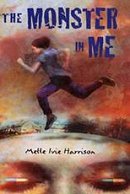 I have had six books published, and have four more under
contract. I am going to do a quick run-down of the title situation for each. The
Monster In Me, my first book, was published in 2002 by Holiday House. I
originally titled the book The Monster IS Me. In my correspondence with the editor
before it was accepted, she misread the title. I ended up keeping her misreading
simply because it seemed more natural. My second book, Mira, Mirror, (Viking
2004) was originally titled Mirror, Mirror. I was innocently typing my title into
Amazon.com about nine months before the book was due to come out when I
discovered a book coming out by Gregory Maguire nearly the same time, with my
title, and it was already in the system. It happened soon enough that we were able
to discuss title changes. I think it was actually my editor (or someone at the
publishing house) who suggested Mira, Mirror, but it could have been me. I don't
remember anymore. This is one of those cases where a forced name change was a
huge bonus. Mira, Mirror is far more memorable as a title than Mirror, Mirror,
though not necessarily easy to distinguish with some accents.
I have had six books published, and have four more under
contract. I am going to do a quick run-down of the title situation for each. The
Monster In Me, my first book, was published in 2002 by Holiday House. I
originally titled the book The Monster IS Me. In my correspondence with the editor
before it was accepted, she misread the title. I ended up keeping her misreading
simply because it seemed more natural. My second book, Mira, Mirror, (Viking
2004) was originally titled Mirror, Mirror. I was innocently typing my title into
Amazon.com about nine months before the book was due to come out when I
discovered a book coming out by Gregory Maguire nearly the same time, with my
title, and it was already in the system. It happened soon enough that we were able
to discuss title changes. I think it was actually my editor (or someone at the
publishing house) who suggested Mira, Mirror, but it could have been me. I don't
remember anymore. This is one of those cases where a forced name change was a
huge bonus. Mira, Mirror is far more memorable as a title than Mirror, Mirror,
though not necessarily easy to distinguish with some accents.
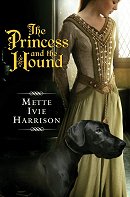 My third book, The Princess and the Hound (Harper
2007), was my title. No one ever suggested a change, though the book is actually
written from the viewpoint of the prince. I think marketing rightly assumed that the
book would sell more to teen girls than to teen boys, though I have had some teen
boys who are flexible readers who enjoyed it. The title rightly gives the feeling of
the book, which is medieval German-ish never-never land. It also hints at the
central mystery, which is why Prince George cannot speak to this one hound of all
the animals in the world he can speak with magically. And it hints at magic and
romance. My publisher described this book from the first as a retelling of Beauty
and the Beast. Looking back on the story, I can see the hints of that fairy tale deep
down. But I wrote it as a new fairy tale, intending for readers to feel like they
should know this fairy tale, but that they had never heard it before. I think the title
does a good job of hinting at that, as well.
My third book, The Princess and the Hound (Harper
2007), was my title. No one ever suggested a change, though the book is actually
written from the viewpoint of the prince. I think marketing rightly assumed that the
book would sell more to teen girls than to teen boys, though I have had some teen
boys who are flexible readers who enjoyed it. The title rightly gives the feeling of
the book, which is medieval German-ish never-never land. It also hints at the
central mystery, which is why Prince George cannot speak to this one hound of all
the animals in the world he can speak with magically. And it hints at magic and
romance. My publisher described this book from the first as a retelling of Beauty
and the Beast. Looking back on the story, I can see the hints of that fairy tale deep
down. But I wrote it as a new fairy tale, intending for readers to feel like they
should know this fairy tale, but that they had never heard it before. I think the title
does a good job of hinting at that, as well.
I think it was Dave Wolverton (aka David Farland) who once told me that a good
title should have an element of traditional fantasy in it, and then a twist. One of his
examples was War for the Oaks by Emma Bull. Also his own The Runelords. I
suppose The Princess and the Hound mixes two elements of traditional fantasy
(royalty and talking animals). I don't know how much of a twist it gives, but
maybe a little.
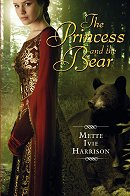 The second book in that same series (my fourth) was originally
titled The Hound and the Bear by me. I intended the third book in the series to be
The Hound's Daughter. Not inspired titles, I'm afraid. I tend to give rather literal
titles to books. And to me, the series was tied together by the hound as a character
who was in all three books. She wasn't the main character in each book, but her
concerns were part of each plot and theme. The whole question of what it is to be
human came from her. However, the powers that be (Marketing) felt strongly that
the book should be title The Princess and the Bear (Harper 2009), because
"princess" was a word that marketing felt drew teen girls in. I argued that there was
in fact, no princess in the book. There was a hound who married a king and became
a queen. I suggested The Queen and the Bear to no avail, because queens are too
old for teen readers. I still sometimes get in a mood about this title and will sign
books to readers "There is no princess in this book." But the book did well with
that title and I've never heard a reader complain about it. I did not change anything
in the text of the book to make the hound into a princess.
The second book in that same series (my fourth) was originally
titled The Hound and the Bear by me. I intended the third book in the series to be
The Hound's Daughter. Not inspired titles, I'm afraid. I tend to give rather literal
titles to books. And to me, the series was tied together by the hound as a character
who was in all three books. She wasn't the main character in each book, but her
concerns were part of each plot and theme. The whole question of what it is to be
human came from her. However, the powers that be (Marketing) felt strongly that
the book should be title The Princess and the Bear (Harper 2009), because
"princess" was a word that marketing felt drew teen girls in. I argued that there was
in fact, no princess in the book. There was a hound who married a king and became
a queen. I suggested The Queen and the Bear to no avail, because queens are too
old for teen readers. I still sometimes get in a mood about this title and will sign
books to readers "There is no princess in this book." But the book did well with
that title and I've never heard a reader complain about it. I did not change anything
in the text of the book to make the hound into a princess.
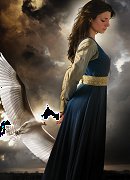 My fifth book (Harper 2010) was the third in the
Princess series and was eventually titled The Princess and the Snowbird. This is, in
the end, a much better title than The Hound's Daughter, and I admit it. By this
point, I knew the marketing department well enough that I changed the book
slightly to make the snowbird a more important character than it had been in the
first draft. This might have happened without the title change, and it improved the
book in more than one way.
My fifth book (Harper 2010) was the third in the
Princess series and was eventually titled The Princess and the Snowbird. This is, in
the end, a much better title than The Hound's Daughter, and I admit it. By this
point, I knew the marketing department well enough that I changed the book
slightly to make the snowbird a more important character than it had been in the
first draft. This might have happened without the title change, and it improved the
book in more than one way.
My sixth book (Egmont 2011) is Tris and Izzie. This was
my original title for the series. Again, it is mostly literal. It is a retelling in a
contemporary setting of the old German epic Tristan and Isolde. I thought using
those names in the title would make it sound old-fashioned and vaguely
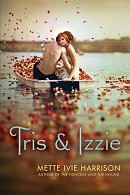 Wagnerian, which I didn't want. I wanted to make sure the book could be enjoyed
by anyone, not just those who had seen the 2006 movie or had read the original in
one of its various forms. Also, the character who tells the story is Izzie, and she has
been told she has no magic. Her name fits with contemporary high school, as does
the name Tris, for the male lead who is disguising himself as a non-magical high
school senior transfer student.
Wagnerian, which I didn't want. I wanted to make sure the book could be enjoyed
by anyone, not just those who had seen the 2006 movie or had read the original in
one of its various forms. Also, the character who tells the story is Izzie, and she has
been told she has no magic. Her name fits with contemporary high school, as does
the name Tris, for the male lead who is disguising himself as a non-magical high
school senior transfer student.
The series under contract with Harper was originally titled Two Princesses, Two
Magics, Two Queens. My literal titling is apparent here again. It is about two
princesses in a kingdom with two magics, who eventually become queens of their
respective kingdoms. But the editor and I have talked a bit about titles and at this
point have decided on A Crown of Diamonds and Sapphires as a more evocative
title that allows a more interesting cover. The other two books of the series will
likely be variations on that, with Sword and Flute in the titles. We'll see. As for
my last book under contract, I don't have a firm title for it yet. The working title is
Magic and Misapprehension, and it's a sort of Regency fantasy/romance. The title
it supposed to hint at Jane Austen, though the book isn't Austen at all.
The title of a book is really the first part of your book that a reader sees. It is more
important than cover copy. It is more important than the first line or first chapter of
your book, which are very, very important. I suppose it doesn't help much to stress
out about having the perfect title, but you want to spend time thinking about it.
You can spend that time while you are working on your novel, while you are
reading other novels and thinking about good titles (or bad ones) that have been
used. But spend time on it.
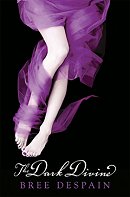
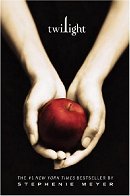
Twilight is an interesting choice in terms of cover and title. It is an abstract
concept, and the cover is abstract, as well. A lot of paranormal authors in YA have
had similar covers. Take Aprilynne Pike's Wings as an example of the abstract
cover and title. Many also have a red color scheme and a model on the cover like
The Dark Divine by BreeDespain. I compare this whole genre to, say, The Hunger
Games. A very literal title, but the cover is abstract. And a lot of other dystopians
have similar covers, abstract and dark. James Dashner's The Maze Runner or
Bumped by Megan McCafferty.


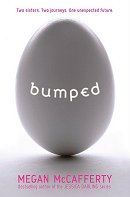
Now, on to covers. I have had very little say in covers, and this is true of most
authors.When you sign a contract with a publisher, you keep the copyright to your
work. You are selling to the publisher the right to publish a particular edition, and
you grant them the right to market the book as they see fit. You don't tell the
publisher what ads to run or how much to spend on book placement in a bookstore.
Likewise, you don't choose the cover or the copy on the cover. (Occasionally I
have been asked to look through it, but I have never written it.)
Mostly, I get the cover art with the ARC (about 4-6 months before publication) and
I can choose to either love it or ask my agent to go to bat to get it changed. With
The Princess and the Hound, I was actually allowed to have some input on two
separate cover ideas, with different models in different green dresses. I voted for
the cover which is on the book, though I don't know that my word was final. I was
surprised because I liked the other dress better in some ways, but I liked the model
facing away from the reader. It seemed to fit her character. I wrote into The
Princess and the Bear the red velvet dress that the cover model is wearing and was
absurdly pleased when my vision of the cover came mostly true. I have all three of
my first three novels' cover art in original form (where available, or a signed print)
up in my front room because I think they were good art as well as good covers,
though there is no reason that this has to be true.
With Snowbird, I was frustrated at the initial cover because the dress on the model
was not the dress I had described in the book and the snowbird in the background
was obviously a brown hawk. In my book, the snowbird is a magical creature that
is hidden against snow because it is so white. I felt strongly the cover needed to be
changed, and in fact, I did this without asking my agent to step in. I simply
described in a short email to my editor what I liked about the cover (first) and then
what changes I felt were needed and why. The editor was very professional, took
my concerns to her committee, and came back with a compromise. In the end, I
changed the description of the dress to match the cover art, and the artist whitened
the wings of the bird. I was very happy with this. I felt like I had handled things
professionally, and that the publisher had, as well.
For Tris and Izzie, I got to see the cover almost a year before the book came out,
but I had nothing to say. I loved the cover without reservation. It had the right
romantic feel, and as I keep saying when people ask -- what could be bad about a
hot guy without a shirt on? It works for the Twilight movies, right? Why not for my
book? Seriously, though, I also loved that the skiff that I describe in the book
ended up on the cover. That was one of the unique images from the novel and the
designer was able to find a stock photo that fit it well. I also like the fact that the
girl is looking into the eyes of the audience. She is the one telling the story, so that
worked. The cover gives the immediate information that this is a romance, but not
an ordinary one. I think that is all that it needs.
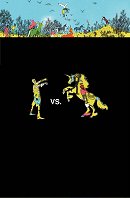 OK, a couple of examples of cover art not on my own
books. One recent book that came out and that did, from my understanding, better
than expected perhaps in part because of a genius cover was Zombies vs. Unicorns,
an anthology edited by Holly Black and Justine Larbelestier. Holly and Justine are
both well-known writers in their own rights, and they got some big names to
contribute to the book. But anthologies don't always sell well. The cover on this
book, a black cutout over a strange, colorful pastoral scene with zombies and
unicorns is perfect. There are dark stories in this anthology, and the cover hints at
that. There are also lighter stories.
OK, a couple of examples of cover art not on my own
books. One recent book that came out and that did, from my understanding, better
than expected perhaps in part because of a genius cover was Zombies vs. Unicorns,
an anthology edited by Holly Black and Justine Larbelestier. Holly and Justine are
both well-known writers in their own rights, and they got some big names to
contribute to the book. But anthologies don't always sell well. The cover on this
book, a black cutout over a strange, colorful pastoral scene with zombies and
unicorns is perfect. There are dark stories in this anthology, and the cover hints at
that. There are also lighter stories.
Another cover I love is the one from Robin Hobb's
Assassin's Apprentice. Clearly, a lot of money was spent on the cover, and the
illustrator is John Howe. Beautiful, fantasy art that fits the book perfectly. Naomi
Novik's Temeraire books are more of the abstract variety, with an icon of the
cover rather than a picture. I like them a lot.
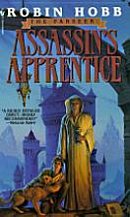
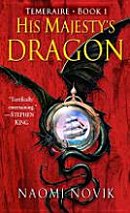
Now on to some examples of covers I think are wretched.
Lois McMaster Bujold's Miles Vorkosigan books have had almost universally
terrible covers. I suppose that they are fairly standard Baen, but the one on 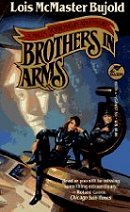 Brothers in Arms, which was rumored to have been made for another book and cut
and pasted for this one, has been replaced, thank goodness. The latest ones are a
little better, and they have the virtue of selling books to a male audience though the
author is clearly female. They are new Space Opera, and without these more
standard covers might not have sold as well, so even these bad covers have a
certain reasoning behind them that makes sense. I suspect Bujold doesn't love
them, but she accepts them as a necessity for selling books.
Brothers in Arms, which was rumored to have been made for another book and cut
and pasted for this one, has been replaced, thank goodness. The latest ones are a
little better, and they have the virtue of selling books to a male audience though the
author is clearly female. They are new Space Opera, and without these more
standard covers might not have sold as well, so even these bad covers have a
certain reasoning behind them that makes sense. I suspect Bujold doesn't love
them, but she accepts them as a necessity for selling books.
 Another cover I don't like at all is Shannon Hale's The Actor and
the Housewife. I am only picking books I love here, and if I haven't said it
elsewhere, this is one of my favorite books of all time. I love Shannon Hale, but
this is a special book about Mormons and being a housewife and a writer and it
appeals to my soul in a way it may not appeal to everyone. Nonetheless, the figures
with their heads cut off feel creepy to me, and the housewife is cheesy and Brady
Bunch-esque. Yet there is a reason that marketing chose this cover. Obviously,
they thought it appealed to the audience and was a short-hand of what the book
was about. It is about a housewife and a famous actor in a funny story that isn't
quite romance. I think they didn't want Mormonism on the cover, so it's not there.
Another cover I don't like at all is Shannon Hale's The Actor and
the Housewife. I am only picking books I love here, and if I haven't said it
elsewhere, this is one of my favorite books of all time. I love Shannon Hale, but
this is a special book about Mormons and being a housewife and a writer and it
appeals to my soul in a way it may not appeal to everyone. Nonetheless, the figures
with their heads cut off feel creepy to me, and the housewife is cheesy and Brady
Bunch-esque. Yet there is a reason that marketing chose this cover. Obviously,
they thought it appealed to the audience and was a short-hand of what the book
was about. It is about a housewife and a famous actor in a funny story that isn't
quite romance. I think they didn't want Mormonism on the cover, so it's not there.
What it comes down to in the end is that the author gets neither the credit nor the
blame for cover art. An author might possibly consult on the cover art. The title is
often the author's creation, but not always, and might be changed several times.
This is why authors tend to be cautious giving out titles before the book is actually
printed. It's always in flux. As an author, think twice before complaining about a
cover. But once you have thought twice, if you can be professional and calm and
reasoned about your problems, don't feel bad about discussing them with an editor
or agent. Probably there will be some compromise found, and in the end, you will
be very happy about your book's cover and title.
Continued Below Advertisement
Read more by Mette Ivie Harrison